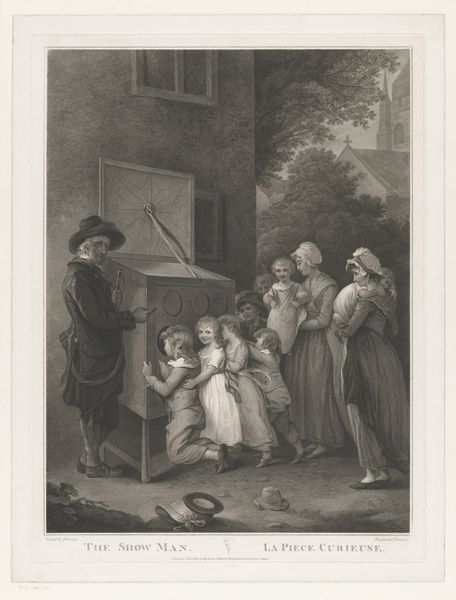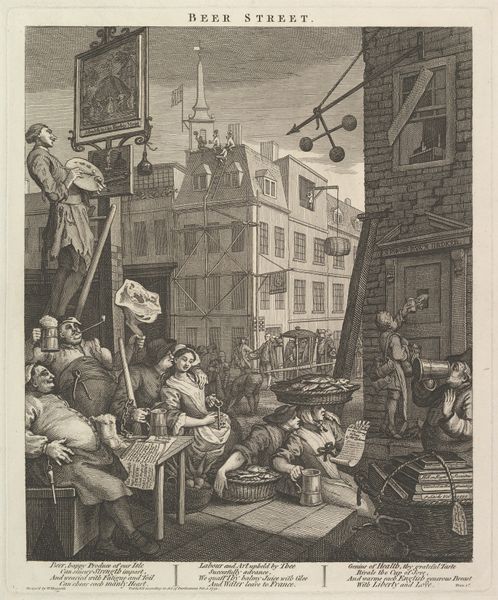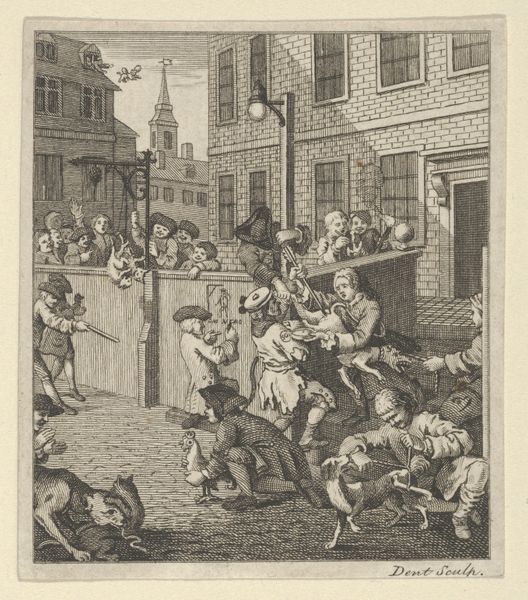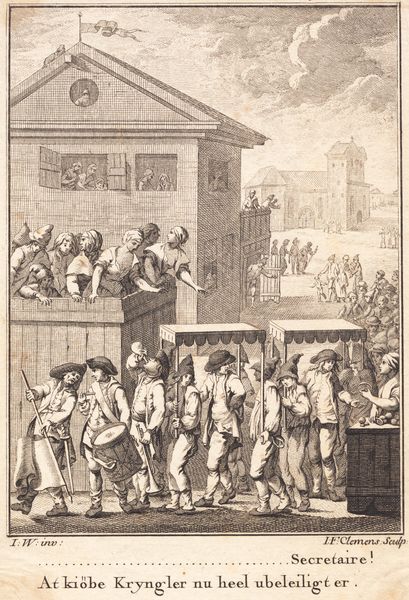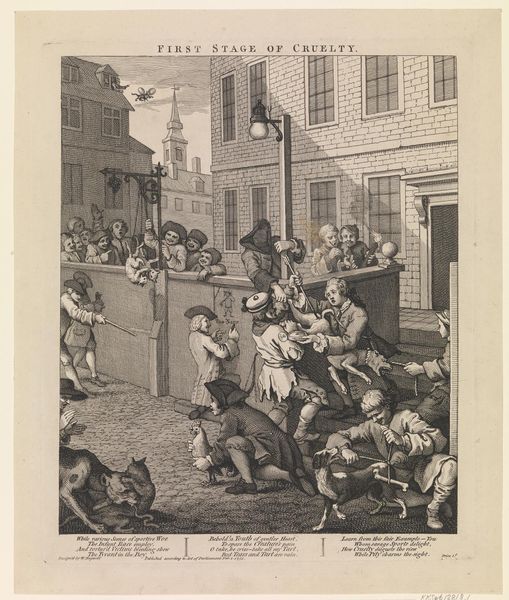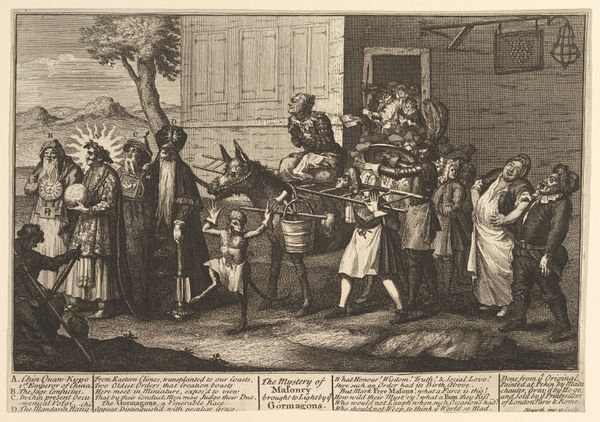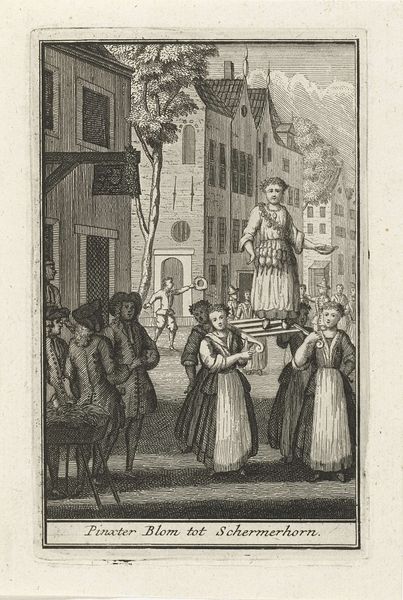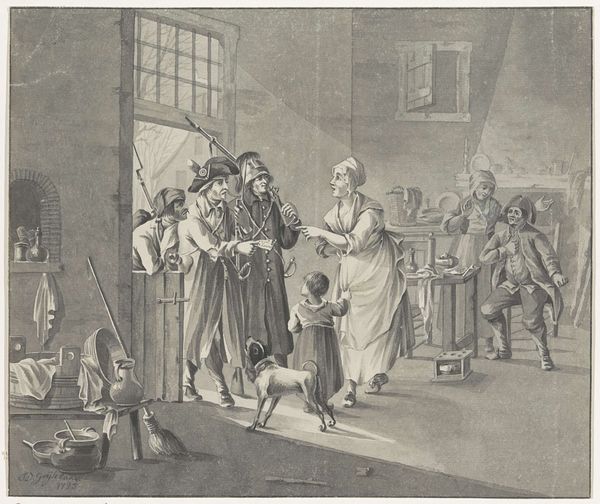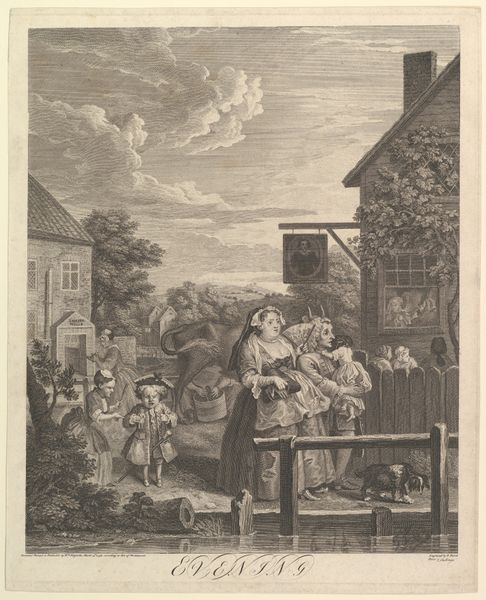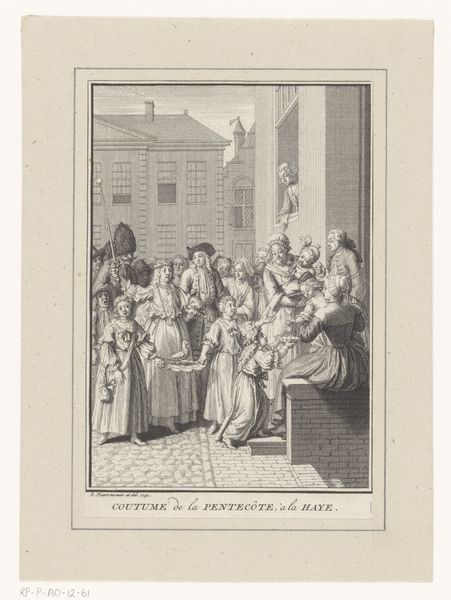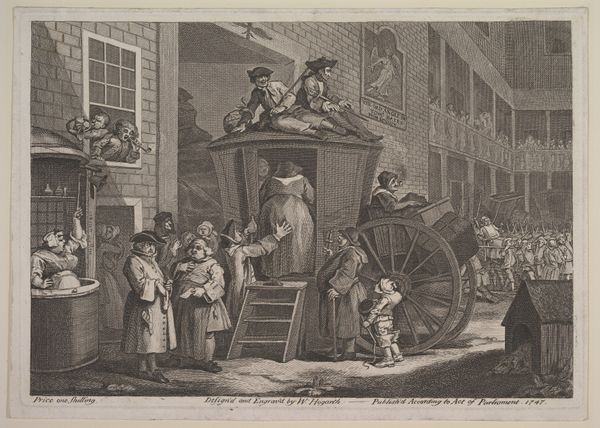
drawing, print, etching, engraving
#
drawing
#
narrative-art
#
baroque
# print
#
etching
#
cityscape
#
genre-painting
#
academic-art
#
engraving
#
building
Dimensions: plate: 19 5/16 x 16 1/8 in. (49 x 41 cm)
Copyright: Public Domain
William Hogarth created this engraving, called "Noon," as part of a series called "The Four Times of Day," in 18th century England. Hogarth’s series uses the times of day to comment on the social structures of his time. In "Noon" he contrasts the lives of the poor with the upper class. On one side, we see the disarray of a French ordinary, with chaotic street vendors, and on the other side is the prim entrance of a church, with an affluent family emerging. The church is situated next to a sign for "Good Ordinary," an establishment that seems anything but. Through visual codes, Hogarth challenges the church’s self-importance. The churchgoers appear rather plain and pasty, in contrast to the sensuality of the French bar. Hogarth seems to be poking fun at the institutions of his time. As art historians, we look to period newspapers and archives to understand Hogarth's perspective, which can provide further insight into the relationship between art and society.
Comments
No comments
Be the first to comment and join the conversation on the ultimate creative platform.
